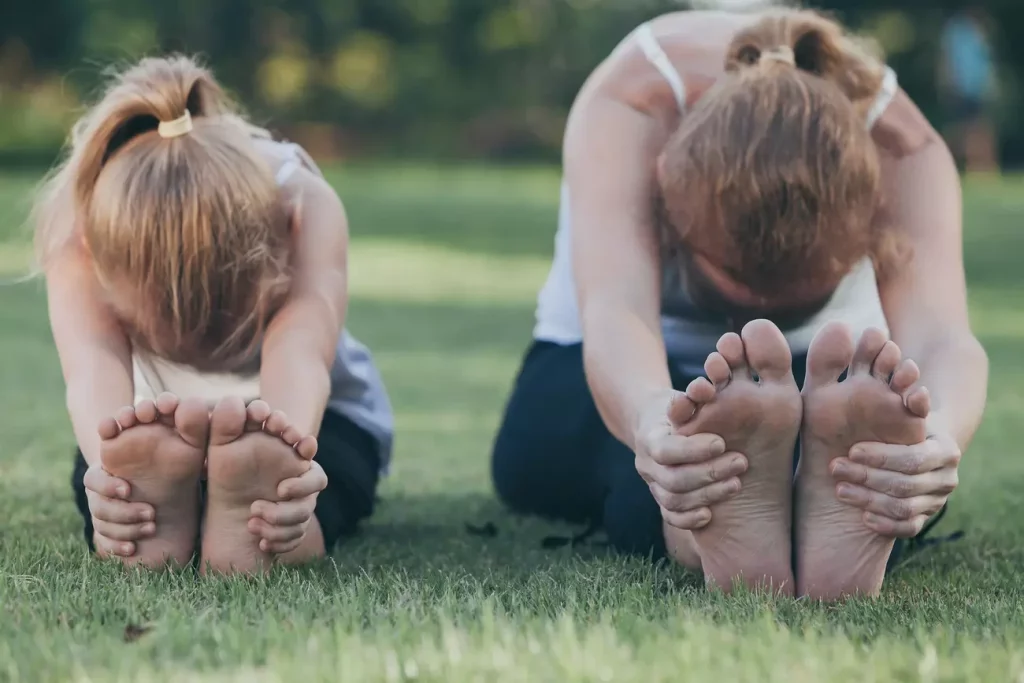Breathing exercises have emerged as a powerful tool for improving health and managing panic attacks. These techniques, rooted in science, can help individuals regulate their stress responses. By understanding how controlled breathing impacts the body, one can access pathways to greater calm and resilience. The journey into effective breathing methods reveals not only immediate relief but also long-term benefits. What specific techniques can individuals adopt to harness these effects?
Key Takeaways
- Breathing exercises activate the parasympathetic nervous system, promoting relaxation and reducing stress levels effectively.
- Controlled breathing increases oxygen flow to the brain, enhancing mental clarity and focus during panic attacks.
- Techniques like diaphragmatic and 4-7-8 breathing help regulate heart rate and alleviate panic symptoms.
- Regular practice of breathing exercises builds resilience, making it easier to manage anxiety in stressful situations.
- Incorporating breathing techniques into daily routines fosters a supportive environment for mental well-being and connection with others.
Understanding Panic Attacks and Their Triggers
Panic attacks affect approximately 2-3% of the population at some point in their lives, creating intense episodes of fear and discomfort. These episodes can manifest suddenly, often without warning, leaving individuals feeling overwhelmed and isolated. Common triggers include stressful situations, significant life changes, or even specific phobias. Additionally, a history of anxiety or trauma may heighten susceptibility to these distressing experiences. Understanding the emotional and physiological responses involved in panic attacks can foster compassion and connection among those affected. It is essential for individuals experiencing panic attacks to know they are not alone. By recognizing their triggers and seeking support, individuals can find pathways toward healing and empowerment, paving the way for healthier coping strategies, such as breathing exercises for panic attacks.
The Science Behind Breathing Exercises
Breathing exercises play an essential role in regulating the body’s stress response, particularly during moments of anxiety. Scientific research indicates that controlled breathing techniques can activate the parasympathetic nervous system, promoting relaxation and reducing the heart rate. This physiological response can greatly alleviate feelings of panic and distress.
Key benefits of breathing exercises include:
- Enhanced oxygen flow to the brain
- Reduction in cortisol levels, the stress hormone
- Improved focus and mental clarity
- Increased emotional resilience
- Greater overall sense of well-being
How Breathing Exercises for Panic Attacks Work
During moments of heightened anxiety, individuals often experience rapid, shallow breathing, which can exacerbate feelings of panic. Breathing exercises for panic attacks work by encouraging a return to a more balanced breathing pattern, helping to regulate the body’s response to stress. These exercises activate the parasympathetic nervous system, promoting relaxation and reducing heart rate. By focusing on slow, deep breaths, individuals can shift their attention away from distressing thoughts, fostering a sense of control and calm. Additionally, consistent practice can build resilience, allowing individuals to manage anxiety more effectively over time. Ultimately, incorporating breathing exercises into daily routines cultivates a supportive environment where individuals feel empowered to confront their challenges and foster emotional well-being.

Techniques for Effective Breathing Exercises
Finding effective techniques for breathing exercises can greatly enhance one’s ability to manage anxiety and reduce the severity of panic attacks. These exercises foster a sense of calm and control, helping individuals feel more connected to their breath and body. Here are some techniques to evaluate:
- Diaphragmatic Breathing: Focus on deep belly breaths rather than shallow chest breathing.
- 4-7-8 Technique: Inhale for four seconds, hold for seven, and exhale for eight.
- Box Breathing: Inhale, hold, exhale, and hold again for equal counts, typically four seconds each.
- Alternate Nostril Breathing: Balance energy by alternating breath between nostrils.
- Mindful Breathing: Concentrate on each breath, observing sensations without judgment.
These techniques can greatly support individuals seeking relief from panic attacks while cultivating a deeper sense of belonging within themselves.
Incorporating Breathing Exercises Into Your Daily Routine
How can one seamlessly integrate breathing exercises into a daily routine? To start, individuals can set aside a few minutes each morning or evening for focused breathing. Utilizing reminders on phones or sticky notes can help establish this habit. Incorporating breathing exercises during daily activities, such as while commuting or waiting in line, can also be effective. For those experiencing panic attacks, practicing these exercises regularly can build resilience. Joining a group or finding an online community can foster accountability and encourage consistency. By sharing experiences and progress with others, individuals can create a supportive environment that enhances their commitment to breathing exercises for panic attacks. Ultimately, these small, intentional moments can greatly improve overall well-being and foster a sense of belonging.
Frequently Asked Questions
Can Breathing Exercises Be Used During a Panic Attack?
Breathing exercises can effectively be utilized during a panic attack. They promote calmness by regulating breath, reducing anxiety, and grounding individuals in the moment, fostering a sense of control and reassurance amidst overwhelming feelings.
How Long Should I Practice Breathing Exercises Daily?
Practicing breathing exercises daily for 5 to 15 minutes can yield significant benefits. Consistency is key; dedicating this time helps cultivate a sense of calm, promoting overall well-being and resilience during challenging moments.
Are There Any Side Effects of Breathing Exercises?
The inquiry regarding potential side effects of breathing exercises highlights a common concern. Generally, they are safe; however, some individuals may experience dizziness or hyperventilation if practiced improperly, emphasizing the importance of guidance and mindful practice.
Can Children Benefit From Breathing Exercises for Panic Attacks?
Children can indeed benefit from breathing exercises for panic attacks. These techniques help them manage anxiety, enhance emotional regulation, and foster a sense of calm, contributing positively to their overall well-being and resilience in stressful situations.
What Is the Best Time to Practice Breathing Exercises?
The best time to practice breathing exercises often varies by individual. Many find early mornings or moments of stress beneficial, as these times promote calmness and mindfulness, fostering a sense of belonging and emotional stability.
Conclusion
Incorporating breathing exercises into daily life can be a transformative practice for those experiencing panic attacks. By harnessing the power of controlled breathing, individuals can cultivate a greater sense of calm and resilience, empowering them to navigate anxiety with greater ease. Understanding the science behind these techniques not only enhances mental clarity but also promotes overall well-being. With regular practice, individuals can find solace in the simple act of breathing, fostering a more balanced and peaceful existence.
You May Also Like To Read:





